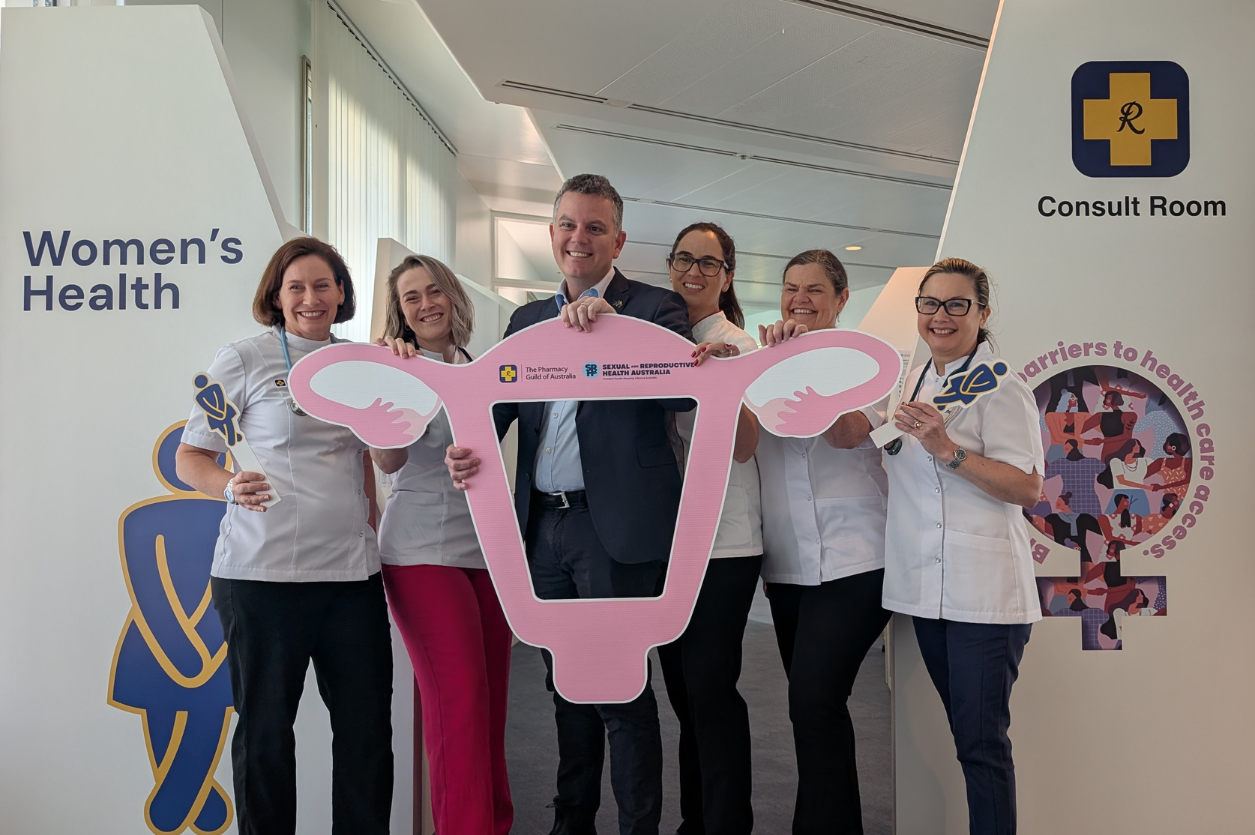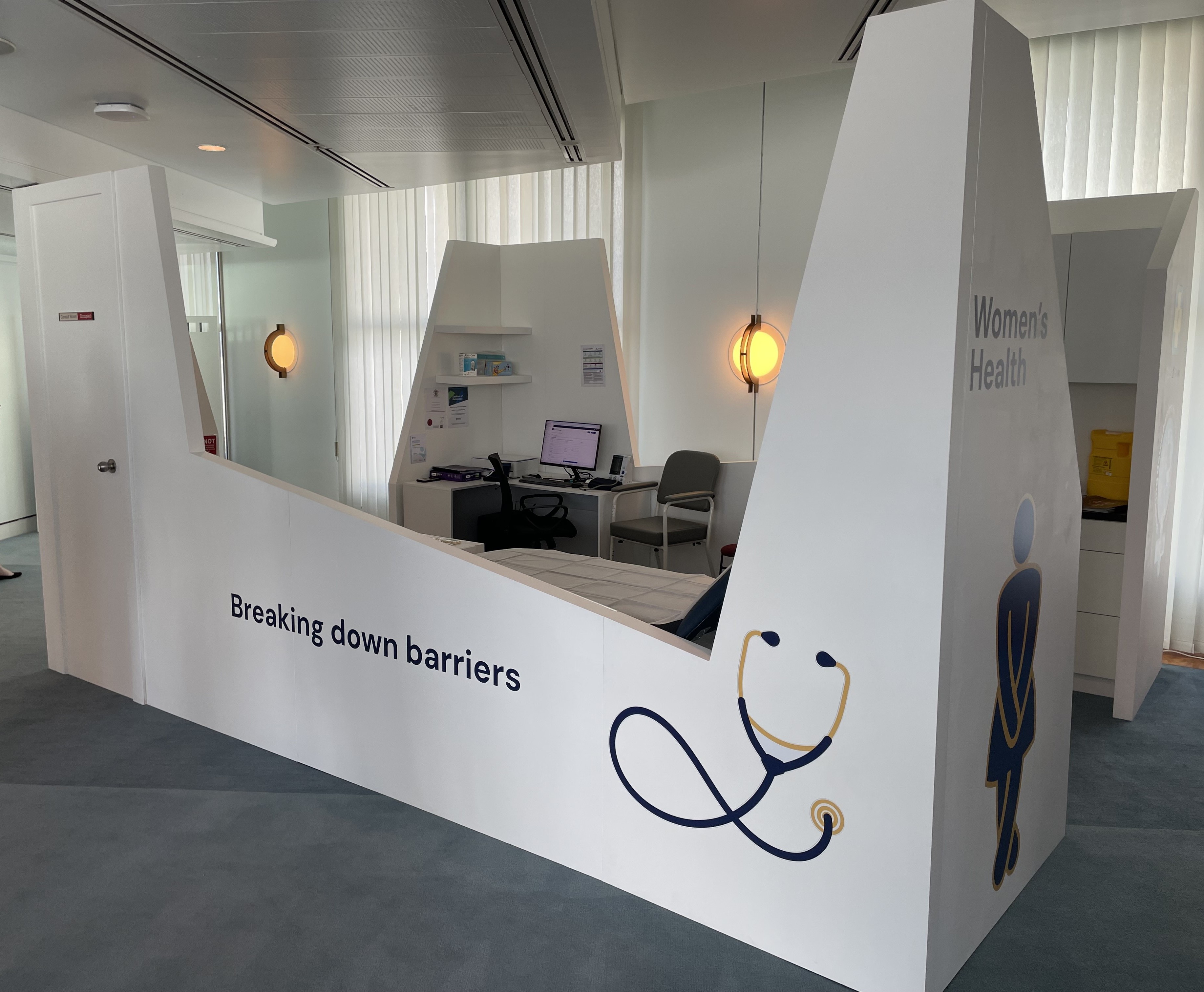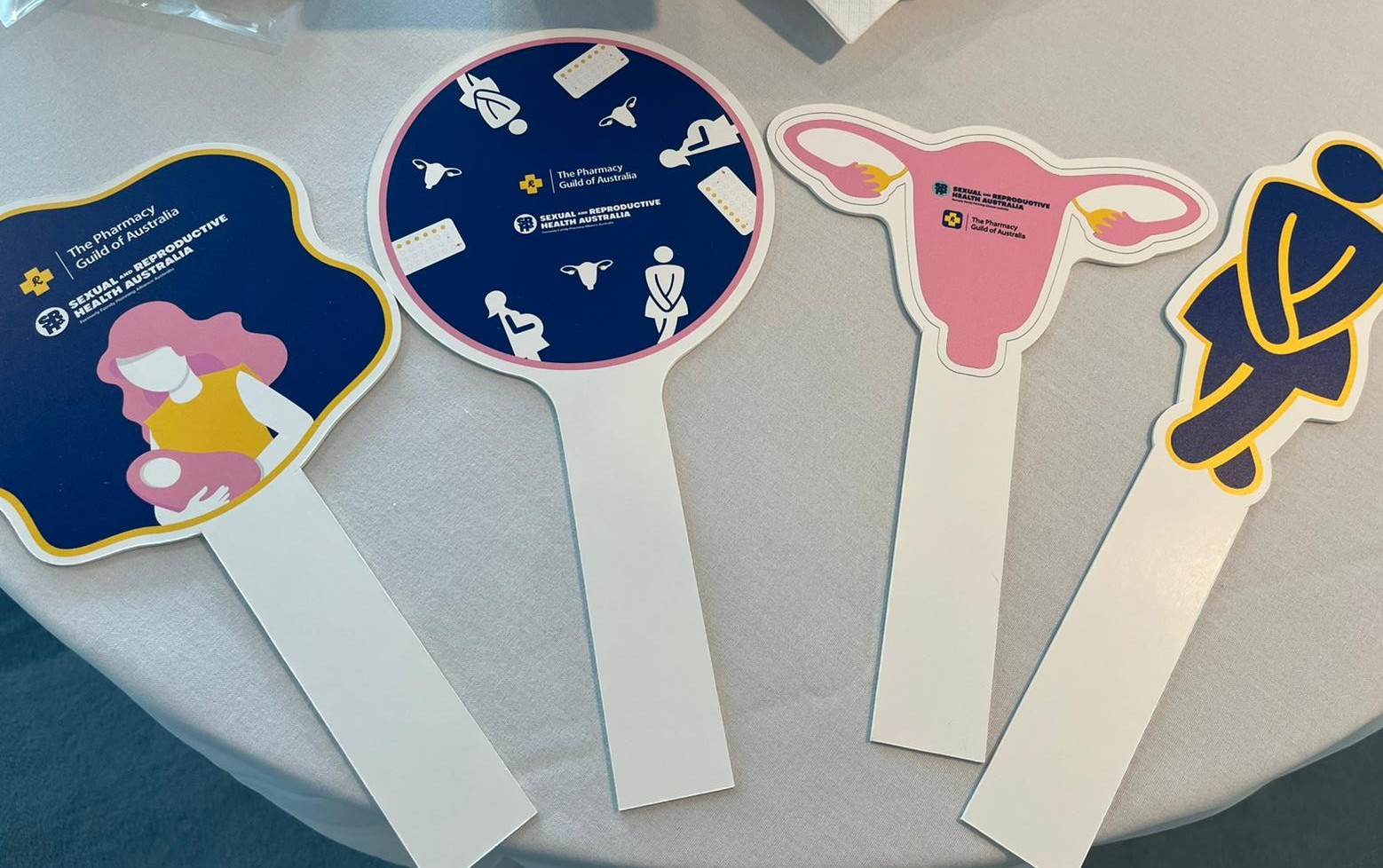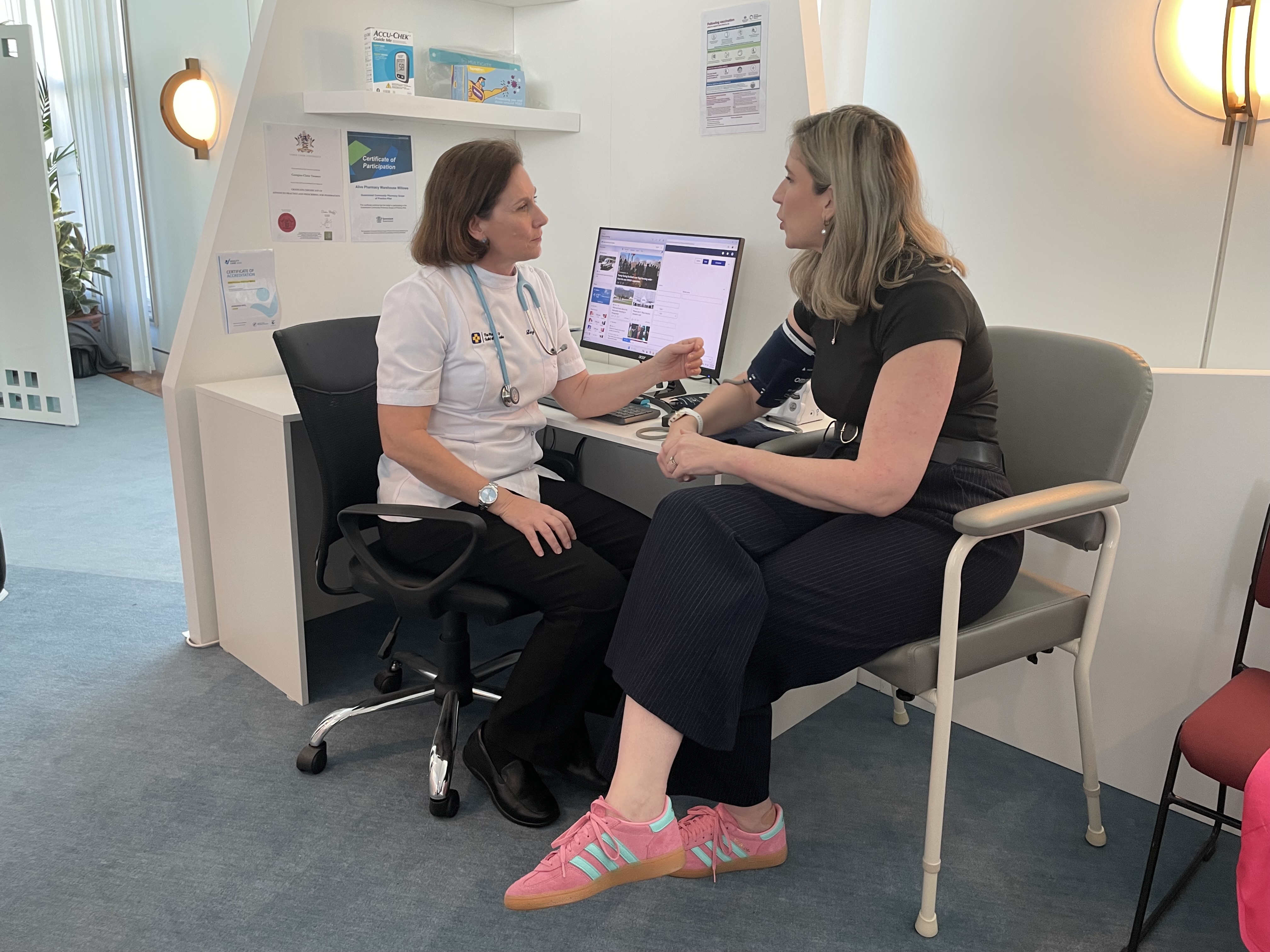Hosted by the Pharmacy Guild of Australia (PGA) in partnership with Sexual and Reproductive Health Australia, the event featured a full-scale model consultation room complete with clinical examination essentials such as a treatment bed, blood pressure monitor, and basic diagnostic kits.
The display gave members of parliament, stakeholders and visitors a first-hand view of pharmacists’ role in expanding timely access to vital healthcare for women nationwide.
This is about showing what’s possible when pharmacists are empowered to work to their full potential. Today is just the beginning of a more accessible, patient-centred future for women’s health.
PGA National President Professor Trent Twomey
Prescribing pharmacists from Queensland demonstrated how direct access to contraception, urinary tract infection (UTI) treatment and everyday health consultations is already making life-changing differences.
“This is about showing what’s possible when pharmacists are empowered to work to their full potential,” PGA National President Professor Trent Twomey said.
“Today is just the beginning of a more accessible, patient-centred future for women’s health.”

Pictured above: PGA National President Trent Twomey at Parliament House on Wednesday flanked by pharmacists from L to R: Lucy Walker, Jess Burrey, Georgina Twomey, Harriet Wright and Cate Whalan.
Daile Kelleher, Chief Executive Officer Sexual and Reproductive Health Australia, said supporting women’s choices was incredibly important.
“We know many women rely on their local community pharmacy to provide advice, support and treatment,” she said.
“There needs to be ‘no wrong door’ when it comes to accessing sexual and reproductive health. Raising awareness about the services available and working with government to shape future policy is absolutely crucial.”
Access gaps in women’s health
The PGA emphasised current barriers to healthcare were leaving women behind.
We know many women rely on their local community pharmacy to provide advice, support and treatment. There needs to be ‘no wrong door’ when it comes to accessing sexual and reproductive health.
Daile Kelleher, Chief Executive Officer Sexual and Reproductive Health Australia
In some parts of Australia, patients are waiting up to three weeks for a doctor’s appointment, with 13 percent of women missing the contraceptive pill because they cannot access a prescription in time.
The consequences are significant: two in five Australian women experience an unintended pregnancy, with one in three of these ending in abortion.
The cost of unplanned pregnancies is estimated at AUD7.2 billion annually, with women bearing more than half of this financial burden.
UTIs also remain a major public health issue, with half of all women experiencing at least one in their lifetime.
Each year, more than 90,000 Australians are hospitalised for UTIs — making this type of infection the leading cause of potentially preventable hospital admissions.
Rates are even higher in remote areas and more than double among Aboriginal and Torres Strait Islander women.
“Women’s health will benefit significantly from increased services being available in community pharmacy.” Professor Twomey said.
“Women can already access treatment for uncomplicated UTIs at community pharmacies across Australia and in some states can visit their community pharmacy to initiate hormonal contraception, such as the pill.”

The full-scale model consultation room visitors a first-hand view of pharmacists’ role in expanding timely access to vital healthcare for women nationwide
Pharmacy access and community support
With 5,977 community pharmacies across Australia — including 2,127 open after hours and 332 locations where pharmacy is the only frontline health service — pharmacies are well positioned to close many healthcare gaps.
Australians already make more than 443 million visits to pharmacies each year, and polling shows strong community support for pharmacists delivering extended services.
According to recent figures, 82 percent of Australians are comfortable with pharmacists initiating birth control and 75 percent support pharmacists treating uncomplicated UTIs.
Victoria’s statewide pilot of pharmacist prescribing showed that 93 percent of women received care within 24 hours and 97 percent were satisfied with the service.

The event was hosted by The Pharmacy Guild of Australia (PGA) in partnership with Sexual and Reproductive Health Australia
Leaders call for action
Professor Twomey said empowering pharmacists to work to their full scope would significantly strengthen women’s health nationally.
Queensland pharmacist Cate Whalan, who prescribes contraception and treats UTIs at her pharmacy, told members of parliament at the Parliament House event she had treated many women since becoming a prescribing pharmacist.
“I’ve seen firsthand what a lifeline it is for women to be able to access primary healthcare support at their local pharmacy,” she said.
Government backing and future plans
The event follows Australia’s Albanese Government’s AUD573 million Women’s Health Package, which will fund PBS-subsidised consultations and prescriptions for contraception and UTI treatment in community pharmacies.
It also builds on PGA’s strategic plan, Towards 2035, which outlines a bold ambition for 80 percent of pharmacies to deliver additional services and 80 percent of pharmacists to be able to treat a wider range of conditions by 2035.
For more information on women’s health please see this infographic.










